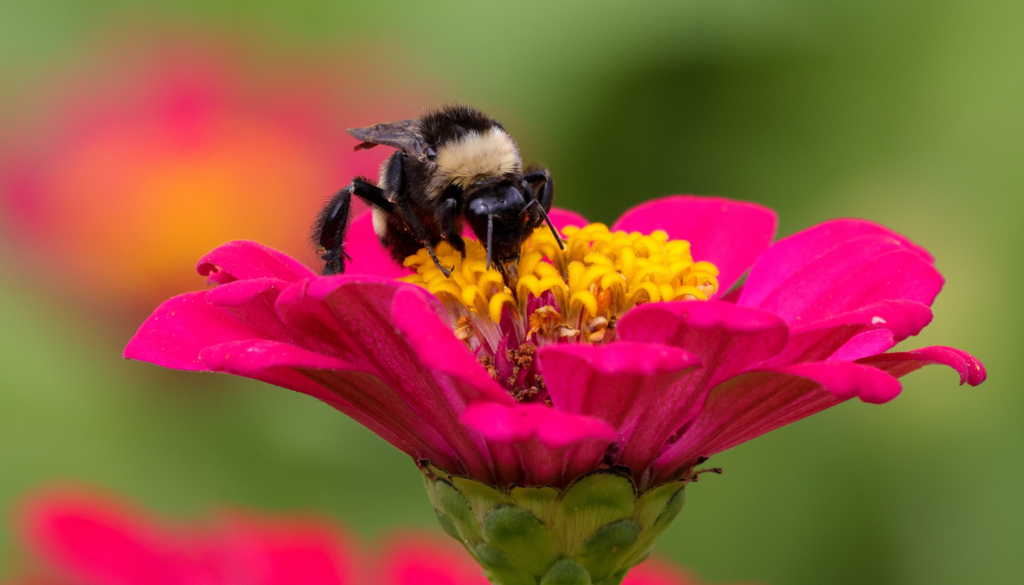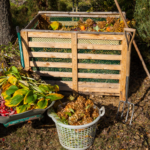Bees may be small, but they play a massive role in the health of our planet. From your morning coffee to your favorite fruits and flowers, many of the things we love rely on pollinators like bees to thrive.
Unfortunately, bee populations are declining due to habitat loss, pesticides, and climate change. But here’s the good news: with just a few simple changes, you can turn your yard into a bee-friendly haven and help support local pollinator populations.
Here’s how to get started, step by step.
Why Bees Matter (And It’s Not Just About Honey)
Bees and other pollinators (like butterflies, hummingbirds, and certain beetles) help fertilize plants so they can produce:
- Fruits and vegetables
- Nuts and seeds
- Flowers and trees
- Grasses and herbs
Without pollinators, ecosystems break down and food supplies shrink. Supporting bees is one of the most impactful things you can do—right from your backyard.
Step 1: Plant Bee-Friendly Flowers
The most important thing you can do is grow flowers that bees love. Bees are drawn to blooms that are rich in nectar and pollen—and bonus points for native species!
🌼 Best Flowers for Bees:
- Coneflower (Echinacea)
- Black-eyed Susan
- Lavender
- Bee balm
- Borage
- Zinnias
- Sunflowers
- Salvia
- Asters
Tip: Choose native plants specific to your region—they’re adapted to local bees and climate conditions.
Step 2: Aim for Continuous Bloom
Bees are active from early spring through late fall, so make sure your garden offers flowers throughout the seasons.
Flowering Schedule Example:
- Spring: Crocus, snowdrops, wild violets
- Summer: Lavender, bee balm, coreopsis
- Fall: Asters, goldenrod, sedum
The more variety you offer, the more bees you’ll see!
Step 3: Go Chemical-Free
One of the biggest threats to bees is pesticides and herbicides. Even “bee-friendly” chemicals can be harmful if applied at the wrong time.
🌱 What to Do Instead:
- Use organic or natural pest controls
- Introduce beneficial insects (like ladybugs)
- Remove pests manually when possible
- Plant companion plants to deter unwanted bugs naturally
Healthy gardens are buzzing with life—not covered in chemicals.
Step 4: Provide Fresh Water
Bees need water, especially during hot summer months. But they can drown in deep containers or slippery birdbaths.
🐝 Easy Bee Watering Station:
- Use a shallow dish or saucer
- Add small stones or marbles so bees can land safely
- Refill often and keep it clean
Place it near your flowers and watch the visitors come.
Step 5: Leave Some Bare Soil
Most native bees don’t live in hives—they nest in the ground. That means they need small areas of exposed, undisturbed soil.
Tips:
- Avoid mulching every inch of your garden
- Leave a few sunny patches of bare earth
- Keep an eye out for small holes—that could be a bee nest!
It’s a small sacrifice for a big ecological impact.
Step 6: Add Bee Hotels
A bee hotel provides a home for solitary bees, like mason bees and leafcutter bees, who lay their eggs in small holes.
You can buy one or build your own using:
- Bamboo stalks
- Hollow reeds or drilled wood blocks
- A weatherproof frame
Place it in a sunny, dry area, out of strong wind and rain.
Step 7: Avoid Hybrid or “Double” Blooms
Many modern flowers are bred for looks, not bees. Hybrid flowers or “double blooms” (with extra petals) often produce little to no pollen or nectar.
Instead, go for:
- Open-faced flowers
- Old-fashioned or heirloom varieties
- Native wildflowers
If it’s hard for a bee to reach the center of a flower, they probably won’t bother.
Step 8: Let Some Things Go a Little Wild
Perfectly trimmed lawns and ultra-manicured beds aren’t ideal for bees. Instead:
- Let clover and dandelions bloom (they’re bee favorites)
- Skip mowing a patch of lawn occasionally
- Allow herbs like mint, basil, and thyme to flower
A little mess equals a lot of pollinator support.
Final Thoughts: A Buzzing Backyard Is a Healthy One
Creating a pollinator-friendly yard doesn’t require a huge investment. Just a few thoughtful changes can make a big difference—for bees, your garden, and the planet.
When you support bees, you’re building a thriving, balanced ecosystem in your own backyard. You’re planting hope, one flower at a time.



